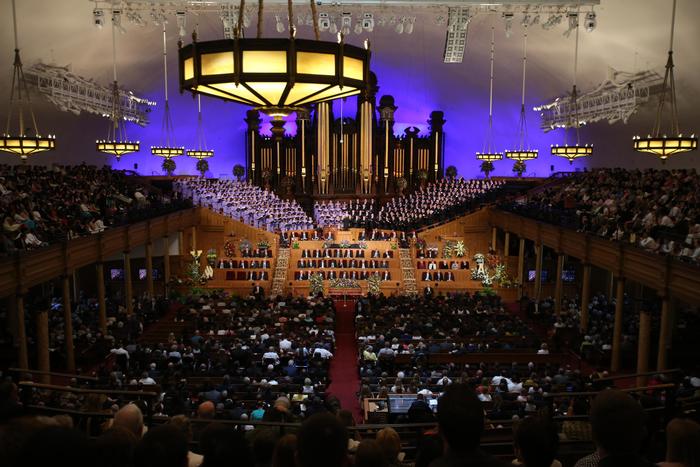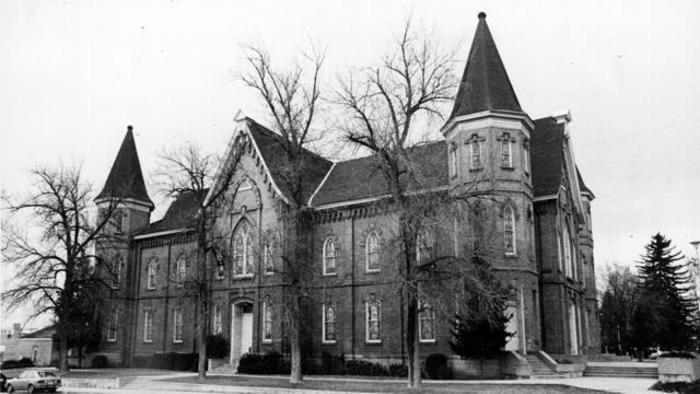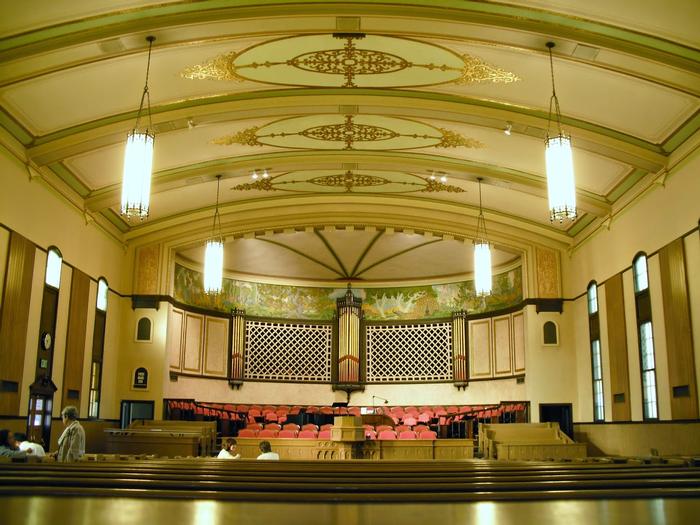Layton Checketts ProposalStories of Community: The Provo TabernacleWhile the home inherently is the structure representing the social and culture center of the family, what is the structure that is the “home” of the community? In Utah where I live LDS tabernacles serve as that social and cultural hub. While most of these tabernacles were built in the early settlement period of Utah during the mid-1800’s to early 1900’s, many are still in use today. As they were some of the first public buildings built in early Utah towns the cities grew around them, connecting them to the center of activity. These tabernacles are used not only for Latter Day saint gatherings but for cultural events. The Provo tabernacle was the place President William Taft was received at when he visited the city, and Sergei Rachmaninoff performed in concert there in 1938. Many cultural and social events are held yearly at the Salt Lake Tabernacle, including Mormon Tabernacle Choir concerts. Although the local city office building may have more activity daily, these tabernacles more truly represent the heart of the cities they are in, historically and in contemporary times. It is interesting to note the architectural similarities between the tabernacles spread all across the state. The local craftsmen and builders put extra effort into making them beautiful to show respect for the purpose they would serve. In fact, the domed roof of the Salt Lake Tabernacle was constructed with ship building techniques and created a large span that was a marvel in the time it was built. Most of the plans are similar in that they have a main entrance, a lower floor filled with bench seating and an upper mezzanine balcony, all facing the front pulpit and stand. There is room on the stand for choirs and musical instruments, as music is important to LDS communities. There is no hierarchy in audience seating and very little on the stand, as the LDS believe that “all men are created equal” and their leaders are unpaid volunteers, not elite clergymen. While these buildings are majestic they are not nearly as tall or grand as some other religion’s worship houses or cathedrals, pointing to the fact that Mormon’s try to be frugal and practical. The plan is open and focused on gathering, there are little auxiliary spaces or side rooms. This basic plan has been in use since the early days of the church and is still used in newer church buildings today. It seems in every community there is a hierarchy of buildings. Some that are just there, and some that really mean something to the people and reflect their values. It is clear that the values and presence of the people of Utah are represented in the Tabernacles. For my essay, I propose to further study and research about several of the tabernacles close to me; the Salt Lake Tabernacle, the Provo Tabernacle, and the Granite Tabernacle, in order to more fully understand how these buildings represent the people who built and use them today. Additional Help and InformationAre you in need of assistance? Please email info@berkeleyprize.org. |



